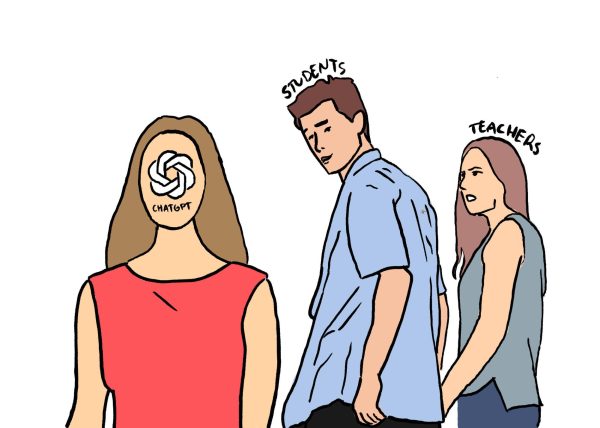Dual enrollment gives me life (a more enjoyable one, at least)
photo by Baruch College
“Taking a schedule filled to the brim with AP classes is the only way to get into a good four-year university.”
“Colleges only value rigorous courses for prospective students and taking anything else could be detrimental to one’s higher education.”
“Dual enrollment is a terrible decision for college-bound students, and universities look at it as taking the easy way out.”
The previous statements are exactly what we are taught to believe throughout high school. Many students choose to take AP courses at the expense of sleepless nights and sacrificing extracurriculars because they are led to believe those courses are the only path to a successful academic future. Speaking from someone who followed that path junior year, AP is helpful, but may not be worth the price for everyone, and AP certainly does not define a student’s future.
Junior year was the definition of stress as I was balancing three sports, clubs and multiple AP courses, including AP Calculus and AP Physics (both of which I passed). I experienced junior year with bloodshot eyes, clinging to a quad-shot caramel macchiato. I survived because academics are a priority and I thought it was necessary in order to get anywhere after high school. However, when senior schedule sign-up came along, I knew I didn’t want my final high school memories to include mental breakdowns and choosing to nap over going to prom. It was time for a change, and I fell right under the charms of dual enrollment.
Despite what we are told, dual enrollment is, hands-down, the best decision I could have made, and I wish I had known to take those courses earlier. Classes are a semester-long experience interacting with college students and professors, compared to an entire year of AP on campus with high school students and teachers. By taking dual enrollment, I was able to earn four credits from two periods, instead of only two credits if I had taken AP at school.
Each of my classes is only one night a week, and the experience is well worth the time. Instead of listening to AP teachers inform me of what college is going to be like, I experience it for myself.
There is no test to determine if college credit is awarded; One simply has to pass the class. Most four-year universities accept dual enrollment credit with the exception of many Ivy League schools, and contrary to popular belief, the same rule applies to AP classes. If you are taking AP in hopes of earning credit at a top-tier institution, think again. Harvard, Yale, Brown and many departments at Colombia will not award credit for AP exams. The best of the best in higher education want students to be educated to their standards, so unfortunately high AP scores won’t give you a free pass.
The school system is biased towards AP, and given the circumstances, it’s easy to see why. Schools are rewarded for success in AP exams. Compared to dual enrollment, where the school board is required to completely cover tuition costs up to nine credit hours, plus all textbooks (which can easily add up to over $1000) and required learning material for the courses, the choice to push AP is clear. The school doesn’t want to pay money for classes offered to students on campus, from which they can potentially benefit.
AP classes assign loads of work weekly in order to prepare students for college courses, yet, my actual college course of English Composition II required four research essays over the semester, and then a final exam. My Federal Government class requires a short weekly quiz, along with a monthly discussion response. There is no busy-work due to the shortened term, so the work you receive is the work necessary to succeed.
Is it really the “easy way out?” No. These college classes are rigorous in content, but the work load is condensed and simplified. Rather than teaching to a test, dual enrollment focuses entirely on the learning experience, stressing practical uses for the material in the real world. Copying ten-page notes from the textbook is a thing of the past, as many classes encourage students to express their opinions and knowledge on the subject in order to determine development in course material.
I still balance the classes with two jobs and two sports, but life is bearable compared to my junior year.
Taking AP classes was valuable, as it taught me hard work and self-motivation, and there is no doubt in my mind that it led me to breeze through classes at SSC. However, I also learned that the workload and stress level of AP courses is far more intense than dual enrollment classes, even though each is weighted at 5.0 on the grading scale.
If AP classes work for you, then continue taking them. However, AP isn’t for everyone, and that doesn’t mean one has less potential to succeed in higher education. I received college acceptance letters from four-year universities for the Fall 2016 term, so I guess taking the road less traveled this year hasn’t hurt me too bad.
In an article from NJ Family assessing the pros and cons of AP courses, a senior lecturer at Stanford University weighed in her opinion.
“While it is true that colleges are looking for students to take a rigorous schedule, that does not mean that they need to take every AP their high school offers. An AP-heavy course load and all A’s is not a guarantee that a student will get into a top-tier institution,” Denise Pope said.
AP classes may be academically challenging, but cannot substitute the first-hand experience of taking classes on a college campus. Whatever path you choose for the final years in high school, whether AP, dual enrollment or even standard, make the decision yourself as to which path best suits your needs.
Your donation will support the student journalists of Hagerty High School. Your contribution helps us publish six issues of the BluePrint and cover our annual website hosting costs. Thank you so much!







